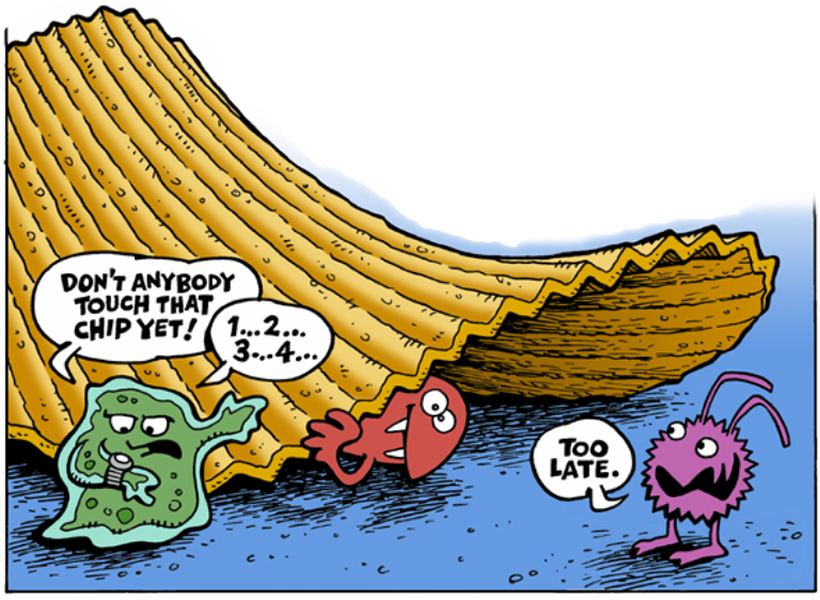
Scientists conducted the experiment by dropping watermelon, bread, bread and butter, and gummy candy on stainless steel, ceramic tiles, wood, and carpet. The “rule,” however, has been debunked.

So food left there for 5 seconds or less will probably collect fewer bacteria than food sitting there for a longer time.
5 second rule food drop. Julia child’s beloved cooking tv show, the french chef, may also have added to. “there were some historical quotes from genghis khan about eating food off the floor in reference. Contemporary folk wisdom assures us if we drop food onto the floor or the ground it remains safe to.
The short answer is yes. Less than a second, five seconds, 30 seconds and 300 seconds (5 minutes). Some people jocularly state that the rule has been extended to 10 seconds.
In some cases, the transfer of bacteria to food begins in less than one second, per an october 2016 study in. The “rule,” however, has been debunked. With so many meals consumed at home these days, there are bound to be mishaps, such as a spilled glass of milk or a sandwich dropped on the floor.
Place food on contaminated surface for 2 sec. A piece of food will pick up more bacteria the longer it spends on the floor. The “khan rule” was based on the idea that food prepared for khan was so special it was impervious to all harm.
That means food left on the floor for an instant. Scientists conducted the experiment by dropping watermelon, bread, bread and butter, and gummy candy on stainless steel, ceramic tiles, wood, and carpet. But fast may not be fast enough.
Add ~ 10g of agar to the flask and heat for 1.5 min or until agar solubilizes with water. Pour liquid into petri dish (be careful, liquid is very hot). In the second case, if the food you ate was dropped on a surface contaminated with a high concentration of a pathogen, you will probably get sick.
Bacteria can attach to your food as soon as it hits the floor. So food left there for 5 seconds or less will probably collect fewer bacteria than food sitting there for a longer time. The article “to eat or not to eat:
What they found — after. Many of us follow this rule without knowing whether it is true and supported by scientific evidence, or whether it is just a myth passed down through generations. There may be some actual science behind this popular deadline for retrieving grounded goodies.
If you drop a piece of food on the ground, as long as you snatch it up within 5 seconds, it’s. The surfaces were covered with a bacteria similar to salmonella. There appears to be no scientific consensus on the general applicability of the rule, and its origin is unclear.
Armed with the foods and the different types of surfaces, they also tested four different times: The food was dropped several times on the different surfaces, each time for a little bit longer: Procedure pour 250ml of water into the 500ml flask.
In less than five seconds, you've already picked up contamination from the floor, dr. Testing the 5 second rule 1. With the recession, the ‘5 second rule’ has been extended to 10 seconds” was posted on twitter by alexander spit on march.
The confusion lies in the fact that some environments and surfaces are safer than others.